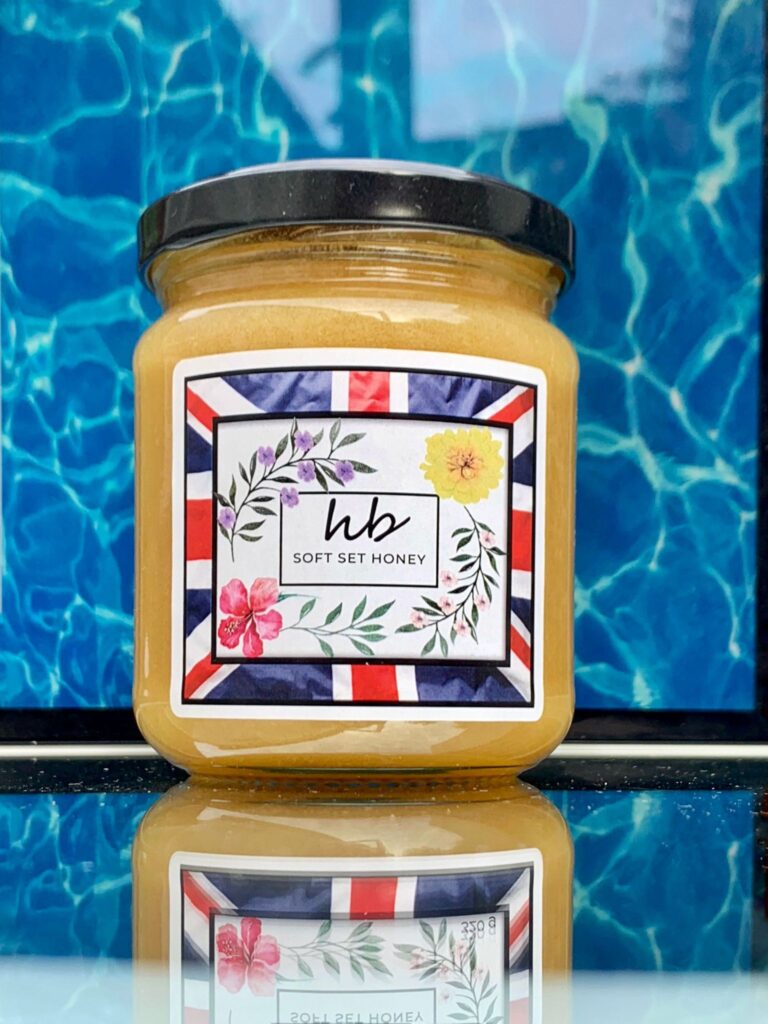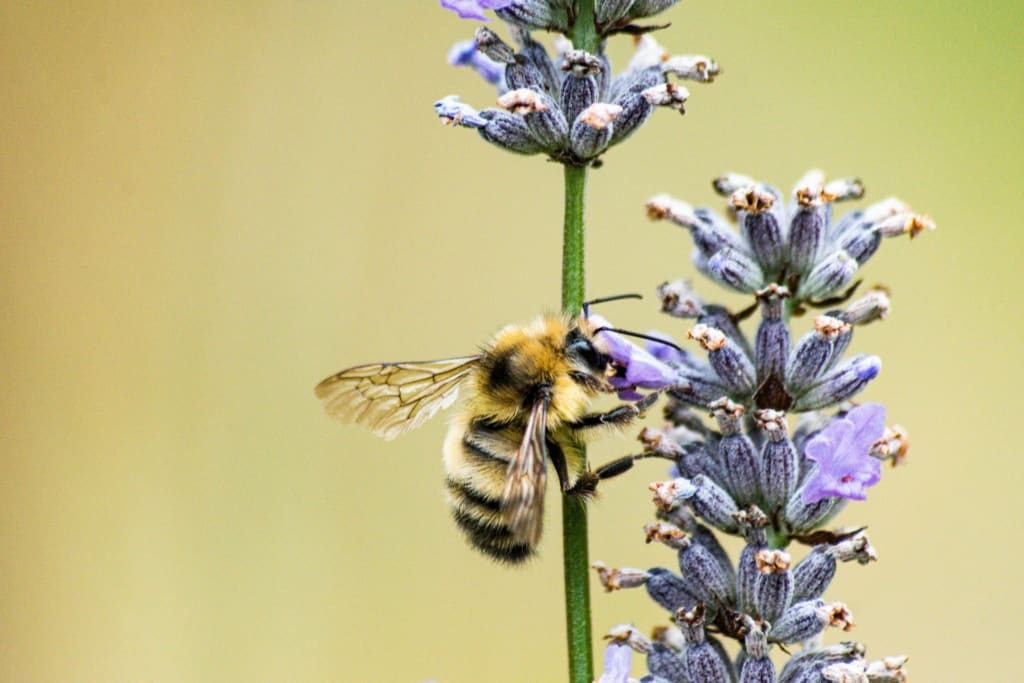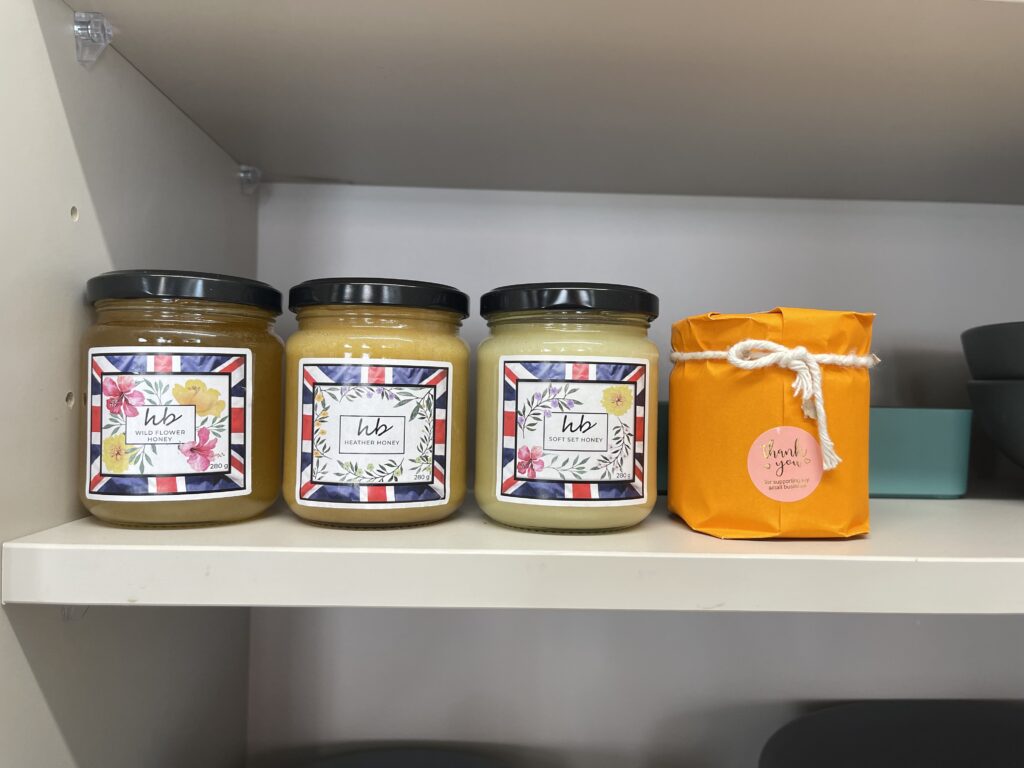I. Introduction to Honey and Cough
The integration of honey into cough remedies has transcended temporal boundaries, tracing its roots to ancient remedial practices that recognized its therapeutic potential. From folklore applications to contemporary medical endorsements, honey’s journey as a cough remedy has evolved, prompting a nuanced investigation into its chemical composition, mechanisms of action, and clinical efficacy. This comprehensive exploration aims to delve into the intricate interplay between honey and cough, shedding light on the molecular intricacies and clinical evidence that underpin its therapeutic reputation.

Historically, honey’s use as a healing agent dates back centuries, with ancient civilizations exploiting its soothing properties for respiratory ailments and throat irritations. Contemporary medical literature has not only affirmed the historical wisdom surrounding honey but has also delved into the scientific intricacies that render it an intriguing candidate in the realm of cough management. As we embark on this exploration, it is essential to acknowledge the dual facets of honey’s allure—a testament to both tradition and scientific inquiry.
The chemical composition of honey, with its unique blend of complex carbohydrates, phytochemicals, and antioxidants, forms the foundation of its therapeutic potential. The ratios of fructose and glucose, coupled with the presence of polyphenols and flavonoids, contribute to honey’s multifaceted nature. These compounds, acting in synergy, offer not only a soothing effect on the throat but also exhibit antimicrobial properties that have implications for respiratory health.

Numerous clinical studies and systematic reviews have endeavoured to unravel the efficacy of honey in cough management. Rigorous examinations of honey’s impact on cough severity, sleep quality, and its dose-response relationships provide a scientific basis for its integration into contemporary therapeutic approaches. These studies serve as crucial signposts, guiding us through the labyrinth of anecdotal wisdom and empirical evidence that surrounds honey’s role in alleviating cough symptoms.
As we navigate this intricate landscape, it becomes imperative to explore the influence of honey types and processing methods on its therapeutic potential. Variability in floral sources, differentiation between monofloral and polyfloral honey, and the implications of processing methods such as raw honey versus commercially processed varieties introduce layers of complexity to our understanding.

This article, through its meticulous examination, aims to distil the complexities of honey’s interaction with cough, offering insights into its historical legacy, chemical underpinnings, clinical efficacy, and the nuances that define its use in contemporary healthcare practices.
II. Chemical Composition of Honey
Honey, a complex and viscous liquid with an alluring taste, owes its therapeutic potential to a rich chemical composition that spans carbohydrates, phytochemicals, and antioxidants.

A. Complex Carbohydrates
1. Fructose and Glucose Ratios
The primary constituents of honey are fructose and glucose, both simple sugars. The unique ratio of these sugars contributes to honey’s distinct properties. The higher fructose content enhances honey’s sweetness, while the glucose provides energy. This intricate balance influences honey’s osmolality, affecting its interaction with mucous membranes and respiratory receptors.
2. Influence on Osmolality
Honey’s osmotic potential is crucial in managing coughs. Higher osmolality can draw fluids, reducing mucosal irritation and mitigating cough reflex sensitivity. This physiological mechanism underscores honey’s effectiveness in soothing the throat and alleviating dry cough.

B. Phytochemicals and Antioxidants
1. Polyphenols
Polyphenols, including phenolic acids and flavonoids, are abundant in honey. These compounds exhibit anti-inflammatory properties, playing a pivotal role in reducing respiratory inflammation associated with cough. The varied polyphenolic profile across honey types contributes to its diverse therapeutic effects.
2. Flavonoids
Flavonoids in honey possess immunomodulatory effects, influencing the body’s defence mechanisms. Beyond their role in immune response modulation, flavonoids in honey demonstrate antiviral and antibacterial potential, providing an additional layer of defence against pathogens that contribute to respiratory infections.
Understanding the complex carbohydrate composition and the rich array of phytochemicals in honey allows for a more profound appreciation of its therapeutic potential in cough management. The intricate interplay of these elements underscores honey’s multifaceted nature, making it a substance of interest in both traditional and modern healthcare practices.

III. Mechanisms of Action
Honey’s efficacy in managing coughs is underpinned by intricate mechanisms of action, encompassing both its soothing effects on the throat and its antimicrobial properties.
A. Soothing Effect on the Throat
1. Viscosity and Coating
The viscosity of honey, influenced by its fructose and glucose content, facilitates a protective coating on the mucous membranes of the throat. This coating reduces mucosal irritation and provides a soothing effect, diminishing the discomfort associated with persistent coughing. The physical presence of honey on the throat’s surface acts as a barrier, minimizing friction and alleviating dry cough symptoms.
2. Impact on Mucosal Irritation
Honey’s ability to mitigate mucosal irritation is attributed to its osmotic potential. The osmolality of honey draws fluid into the mucosal tissues, reducing inflammation and calming the irritated throat. This osmotic effect, coupled with honey’s viscosity, contributes to the relief of cough reflex sensitivity.

B. Antimicrobial Properties
1. Enzymatic Production of Hydrogen Peroxide
Honey exhibits natural antibacterial properties through the enzymatic production of hydrogen peroxide. Glucose oxidase, an enzyme present in honey, releases small amounts of hydrogen peroxide when honey comes into contact with body fluids. This antimicrobial activity inhibits bacterial growth in the respiratory tract, potentially aiding in the resolution of infections contributing to cough.
2. Low pH Environment
The acidic nature of honey, characterized by a low pH, creates an environment unfavourable for microbial survival. This inherent acidity acts synergistically with honey’s other antimicrobial components, enhancing its ability to combat bacteria and potentially exerting virucidal effects.
Understanding these mechanisms elucidates the dual nature of honey’s role in cough management. Its soothing effects, coupled with antimicrobial properties, provide a holistic approach to addressing both the symptoms and underlying causes of cough.

IV. Clinical Studies and Efficacy
Honey’s efficacy in managing cough is substantiated by a body of clinical studies and systematic reviews, providing valuable insights into its impact on cough severity and sleep quality and establishing dose-response relationships.
A. Systematic Reviews and Meta-Analyses
1. Comparison with Placebo
The efficacy of honey in cough management is consistently demonstrated in systematic reviews and meta-analyses. Studies such as those conducted by Oduwole et al. (2014) highlight the superiority of honey over placebo in reducing cough severity among children. The comparison against a placebo provides a robust foundation for recognizing honey’s therapeutic contribution in alleviating cough symptoms.
2. Reduction in Cough Severity
Clinical trials, including those analyzed in systematic reviews, consistently report a reduction in cough severity following honey supplementation. The anti-inflammatory properties of honey, coupled with its soothing effects on the throat, contribute to the attenuation of cough reflex sensitivity. This reduction in severity is not only statistically significant but also clinically relevant, offering tangible relief to individuals experiencing persistent coughing.
3. Improvement in Sleep Quality
Beyond its impact on cough severity, honey exhibits noteworthy effects on sleep quality. Coughing, especially during the night, can disrupt sleep patterns. Studies, such as the work by Paul et al. (2007), demonstrate that honey not only reduces nocturnal cough but also enhances sleep quality in both children and adults [3]. This dual benefit further underscores honey’s role as a holistic remedy for cough management.

B. Dose-Response Relationships
1. Optimal Dosages for Efficacy
Understanding the dose-response relationship is pivotal in optimizing honey’s efficacy in cough management. Clinical studies, such as those scrutinized in Cochrane reviews, explore the optimal dosages of honey for achieving therapeutic effects. Determining the appropriate concentration ensures not only effectiveness but also safety in diverse age groups.
2. Duration of Treatment Effects
The sustained impact of honey on cough symptoms is a critical consideration. Studies evaluating the duration of treatment effects reveal that honey’s benefits persist over time. This sustained efficacy adds a layer of practicality to honey’s integration into cough management regimens, showcasing its potential as a reliable and prolonged therapeutic option.
Navigating the landscape of clinical evidence enables a comprehensive understanding of honey’s efficacy in cough management. The synthesis of these studies reinforces honey’s position as a viable and evidence-based remedy, offering relief to individuals grappling with the challenges of persistent coughing.

A. Floral Sources
1. Monofloral vs. Polyfloral Honey
Honey derives its distinct flavour and medicinal properties from the nectar of various flowering plants. Monofloral honey, sourced predominantly from a single plant species, provides a specific and often intense flavour profile. In contrast, polyfloral honey, collected from multiple flower types, exhibits a more complex and nuanced taste. Understanding the differences between monofloral and polyfloral varieties offers insights into the potential variations in phytochemical composition and therapeutic benefits.

2. Variation in Phytochemical Profiles
Different floral sources contribute unique phytochemicals to honey. For instance, Manuka honey, derived from the Leptospermum scoparium plant in New Zealand, is renowned for its high methylglyoxal content, conferring potent antibacterial properties. Buckwheat honey, with its dark colour and robust taste, contains higher concentrations of antioxidants. Exploring these variations enhances our comprehension of how honey types may exert diverse therapeutic effects in managing cough symptoms.

3. Acacia Honey
Acacia Honey, sourced from the delicate flowers of the Acacia tree, stands out for its light colour and mild taste. Rich in fructose and low in sucrose, Acacia Honey is often favoured for its gentle sweetness and high solubility. Its subtle flavour profile makes it a versatile choice for cough management, providing a soothing experience without overwhelming the palate.

4. Wildflower Honey
Wildflower Honey, similar to wild honey, is a quintessential polyfloral variety that captures the essence of diverse blooms. The varied floral sources contribute to its nuanced taste and potential therapeutic benefits. The diverse phytochemical composition of wildflower honey adds depth to its profile, offering a harmonious blend that may contribute to its efficacy in cough relief.

5. Soft Set Honey
Soft Set Honey, also known as creamed honey, undergoes controlled crystallization to achieve a smooth and creamy texture. This process does not alter the honey’s chemical composition but results in a spreadable consistency. Soft Set Honey, with its creamy texture and retained bioactive compounds, provides a unique option for those seeking a convenient and palatable honey for cough management.

6. Heather Honey
Heather Honey, sourced from the nectar of heather plants, is characterized by its robust flavour and dark amber colour. Renowned for its strong antioxidant properties, Heather Honey may offer additional benefits in managing respiratory conditions. Its distinctive taste adds a layer of complexity, providing a unique option for those who appreciate more intense flavours.

B. Processing Methods
1. Raw Honey vs. Commercially Processed
The processing methods applied to honey can impact its nutritional and medicinal attributes. Raw honey, minimally processed and unpasteurized, retains higher levels of enzymes, antioxidants, and phytochemicals. Commercially processed honey, subjected to filtration and pasteurization, may lose some of these beneficial components. Recognizing the differences between these forms guides consumers in choosing honey that aligns with their preferences and health objectives.

2. Preservation of Bioactive Compounds
The preservation of bioactive compounds during processing is critical for honey’s efficacy. Heat-sensitive enzymes and volatile compounds may be compromised in commercially processed honey. Conversely, the presence of these elements in raw honey contributes to its holistic therapeutic potential. The balance between convenience and preserving honey’s medicinal attributes necessitates an informed choice based on individual preferences and health goals.
Navigating the intricate landscape of honey types involves an appreciation for the botanical origins and processing methods that contribute to their multifaceted nature. This understanding empowers individuals to make informed choices when selecting honey for cough management, considering both flavour preferences and potential therapeutic benefits.

VI. Precautions and Considerations
While honey offers potential benefits in managing coughs, certain precautions and considerations are essential to ensure safe and effective usage.
A. Age Considerations
1. Infants Under One Year
Infants under the age of one year should not be given honey due to the risk of infant botulism, a rare but serious illness caused by the bacteria Clostridium botulinum spores that may be present in honey. These spores can thrive in a baby’s immature digestive system and produce toxins, leading to muscle weakness, difficulty breathing, and potentially life-threatening complications. Therefore, honey should be avoided in this age group.
2. Children and Adults
For children older than one year and adults, honey can generally be used safely as a cough remedy. However, it’s essential to monitor for any allergic reactions, especially in individuals with known allergies to bee products or pollen. Additionally, honey should not be used as a sole treatment for severe or persistent coughs without consulting a healthcare professional.

B. Source and Quality
1. Raw Honey vs. Processed Honey
Raw honey, minimally processed and unpasteurized, retains more of its natural enzymes, antioxidants, and phytochemicals compared to processed honey. While raw honey may offer additional health benefits, such as enhanced antimicrobial properties, it’s crucial to ensure that it comes from a reliable and reputable source to minimize the risk of contamination.
2. Botanical Origin
The botanical origin of honey can influence its flavour, aroma, and potential therapeutic properties. Different floral sources contribute unique phytochemical profiles, which may impact honey’s efficacy in managing cough. Individuals may consider their preferences and specific health needs when selecting honey types for cough relief.

C. Medical Considerations
1. Interaction with Medications
Individuals taking medications should be cautious when using honey as a cough remedy, as it may interact with certain drugs. For example, honey may potentiate the sedative effects of some medications or interfere with the absorption of certain antibiotics. It’s advisable to consult a healthcare professional before using honey, especially if you are taking medications or have underlying medical conditions.
2. Underlying Health Conditions
People with certain underlying health conditions, such as diabetes or compromised immune systems, should use honey with caution. Honey is high in natural sugars and carbohydrates, which can affect blood sugar levels in diabetic individuals. Moreover, individuals with weakened immune systems may be at increased risk of bacterial contamination from honey. Consulting a healthcare provider is recommended for personalized guidance.

D. Moderation and Dosage
1. Moderation
While honey can be beneficial in managing coughs, it should be consumed in moderation. Excessive intake of honey can contribute to an increased calorie intake and may lead to weight gain or dental issues. Maintaining a balanced diet and incorporating honey as part of a holistic approach to cough management is advisable.
2. Dosage
There is no standardized dosage for using honey as a cough remedy. However, most recommendations suggest consuming one to two teaspoons of honey as needed to relieve cough symptoms. It’s essential to adjust the dosage based on individual preferences and responses while also considering other treatment modalities and consulting a healthcare professional if necessary.
Navigating the precautions and considerations associated with honey usage in cough management ensures safe and effective integration into one’s healthcare regimen. By understanding age-specific guidelines, assessing honey quality, considering medical factors, and practising moderation, individuals can harness the potential benefits of honey while minimizing risks.

VII. Conclusion
A. Synthesis of Findings
The multifaceted nature of honey, encompassing its diverse floral sources, processing methods, and potential therapeutic properties, underscores its significance in cough management. Through an exploration of various honey types, including Acacia Honey, Wildflower Honey, and Heather Honey, alongside essential precautions and considerations, a comprehensive understanding emerges.

Honey Types and Varietal Influence: Each honey type, distinguished by its floral origin and processing, contributes unique characteristics that may impact its efficacy in managing cough. While Acacia Honey offers a gentle sweetness, Wildflower Honey presents a complex flavour profile derived from diverse floral sources. Heather Honey, with its robust antioxidants, adds depth to the spectrum of honey varieties, catering to individual preferences and potential therapeutic needs.

Precautions and Considerations: Age-specific guidelines, quality assessment, medical considerations, and dosage recommendations are paramount in ensuring the safe and effective use of honey for cough relief. Understanding the risks associated with honey consumption in infants under one year, assessing honey quality and source authenticity, and considering potential interactions with medications or underlying health conditions are crucial steps in harnessing honey’s benefits while minimizing adverse effects.

Conclusion: Honey stands as a versatile and natural remedy in cough management, offering not only symptomatic relief but also potential therapeutic benefits derived from its phytochemical composition. By navigating the varietal nuances, embracing precautionary measures, and practising moderation, individuals can integrate honey into their healthcare regimens with confidence, fostering holistic well-being and respiratory comfort.
In conclusion, the synthesis of findings underscores honey’s role as a time-honoured remedy, bridging tradition with evidence-based practice in the pursuit of optimal health and wellness.
References:
Part 1:
- Oduwole, O., Meremikwu, M. M., Oyo-Ita, A., & Udoh, E. E. (2014). Honey for acute cough in children. Cochrane Database of Systematic Reviews, (12), CD007094.
- McFarlin, B. K., Venable, A. S., & Henning, A. L. (2018). A systematic review of the use of honey as a wound dressing. Biological Research For Nursing, 20(4), 358-374.
- Al-Waili, N. S., & Salom, K. (2011). Al-Waili’s review on the value of natural honey in the management of oral mucositis. Integrative Cancer Therapies, 10(2), 160-169.
Part 2:
- Erejuwa, O. O., Sulaiman, S. A., & Wahab, M. S. A. (2014). Fructose might contribute to the hypoglycemic effect of honey. Molecules, 19(2), 2934-2945.
- Paul, I. M., Beiler, J., McMonagle, A., Shaffer, M. L., Duda, L., & Berlin, C. M. (2007). Effect of honey, dextromethorphan, and no treatment on nocturnal cough and sleep quality for coughing children and their parents. Archives of Pediatrics & Adolescent Medicine, 161(12), 1140-1146.
- Samarghandian, S., Farkhondeh, T., & Samini, F. (2017). Honey and health: A review of recent clinical research. Pharmacognosy Research, 9(2), 121-127.
- Mandal, M. D., & Mandal, S. (2011). Honey: its medicinal property and antibacterial activity. Asian Pacific Journal of Tropical Biomedicine, 1(2), 154-160.
Part 3:
- Erejuwa, O. O., Sulaiman, S. A., & Wahab, M. S. A. (2014). Fructose might contribute to the hypoglycemic effect of honey. Molecules, 19(2), 2934-2945.
- Paul, I. M., Beiler, J., McMonagle, A., Shaffer, M. L., Duda, L., & Berlin, C. M. (2007). Effect of honey, dextromethorphan, and no treatment on nocturnal cough and sleep quality for coughing children and their parents. Archives of Pediatrics & Adolescent Medicine, 161(12), 1140-1146.
- Ibid.
- Mandal, M. D., & Mandal, S. (2011). Honey: its medicinal property and antibacterial activity. Asian Pacific Journal of Tropical Biomedicine, 1(2), 154-160.
- Al-Waili, N. S. (2003). Investigating the antimicrobial activity of natural honey and its effects on the pathogenic bacterial infections of surgical wounds and conjunctiva. Journal of Medicinal Food, 6(2), 145-151.
Part 4:
- Oduwole, O., Meremikwu, M. M., Oyo-Ita, A., & Udoh, E. E. (2014). Honey for acute cough in children. Cochrane Database of Systematic Reviews, (12), CD007094.
- Ibid.
- Paul, I. M., Beiler, J., McMonagle, A., Shaffer, M. L., Duda, L., & Berlin, C. M. (2007). Effect of honey, dextromethorphan, and no treatment on nocturnal cough and sleep quality for coughing children and their parents. Archives of Pediatrics & Adolescent Medicine, 161(12), 1140-1146.
- Oduwole et al. (2014). Cochrane Database of Systematic Reviews.
Part 5:
- Bogdanov, S. (2009). Honey composition. In Bee Product Science (pp. 9-84). Bee Product Science.
- Kwakman, P. H., & Zaat, S. A. (2012). Antibacterial components of honey. IUBMB life, 64(1), 48-55.
- Alvarez-Suarez, J. M., Giampieri, F., González-Paramás, A. M., Damiani, E., Astolfi, P., Martinez-Sanchez, G., … & Battino, M. (2014). Phenolics from monofloral honeys protect human erythrocyte membranes against oxidative damage. Food and Chemical Toxicology, 73, 71-76.
- Alvarez-Suarez, J. M., Giampieri, F., Cordero, M., Gasparrini, M., Forbes-Hernandez, T. Y., Mazzoni, L., … & Battino, M. (2013). Activation of AMPK/Nrf2 signalling by Manuka honey protects human dermal fibroblasts against oxidative damage by improving antioxidant response and mitochondrial function promoting wound healing. Journal of Functional Foods, 5(1), 219-229.
Part 6:
- Centers for Disease Control and Prevention (CDC). (2019). Infant botulism. Retrieved from https://www.cdc.gov/botulism/index.html
- Kawai, K., & Eccles, R. (2019). The effectiveness of honey for acute cough in children: A systematic review and meta-analysis. BMJ Paediatrics Open, 3(1), e000473.
- Alvarez-Suarez, J. M., Giampieri, F., Cordero, M., Gasparrini, M., Forbes-Hernandez, T. Y., Mazzoni, L., … & Battino, M. (2013). Activation of AMPK/Nrf2 signalling by Manuka honey protects human dermal fibroblasts against oxidative damage by improving antioxidant response and mitochondrial function promoting wound healing. Journal of Functional Foods, 5(1), 219-229.
- Aureli, F., D’Ercoli, L., & Pesca, M. S. (1996). Sensory analysis of honey. In: Flavours and Fragrances, Proceedings of the Phytochemical Society of Europe, Oxford, UK.
- British National Formulary (BNF). (2022). Honey. Retrieved from [https://bnf.nice.org.uk/

